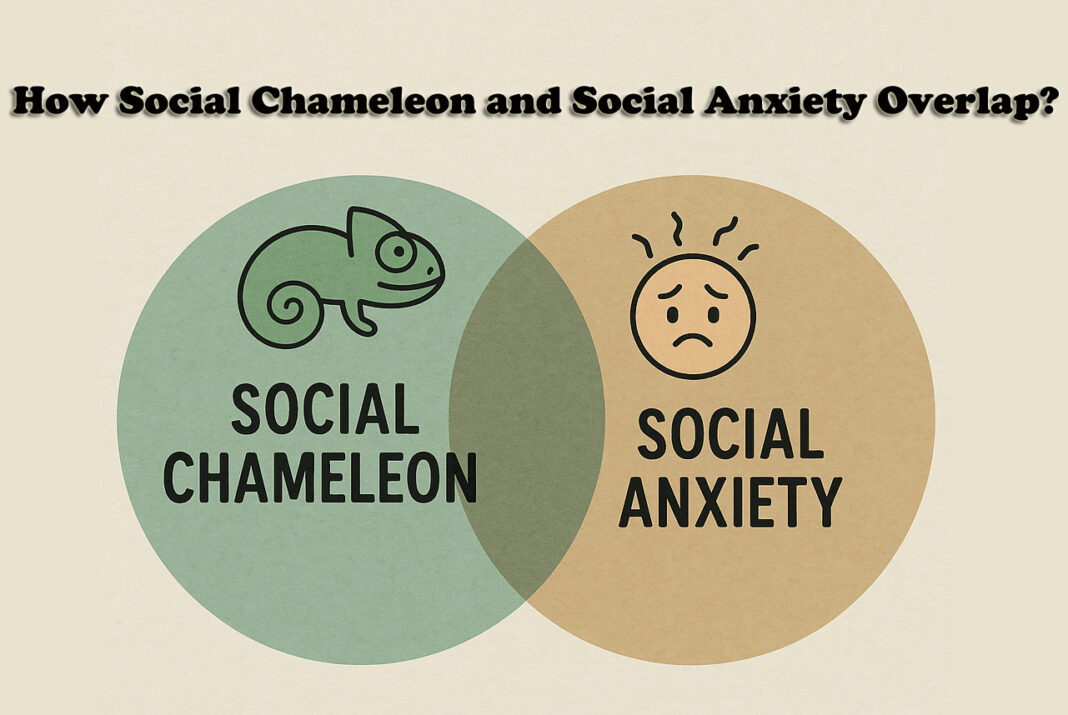Human beings are social creatures; thus, they are wired to seek connections. But the way people connect and the reasons behind their actions can vary from person to person. Some people find it easy to move between social settings with ease, adjusting their behavior with people and situations. On the other hand, some people struggle to express themselves in social environments out of fear of rejection and judgment.
While the two differ in theory, it can be easy to blur the line between being socially adaptable and socially anxious. Let’s understand this.
What is a Social Chameleon?
Individuals who can blend into different social settings easily are termed social chameleons. They do so by adapting their language, values and even humor depending on those around them. At its core, though, this is a survival skill that some people adopt in early development, where they learn that social acceptance is tied to a sense of belonging.
Social chameleons are characterized by the following traits:
- Strong observational ability
- Higher levels of emotional intelligence
- Good communication skills
- Flexible mindset
- Can read social cues easily
These individuals can easily adjust their speech, mirror body language and adapt their preferences smoothly. They can switch seamlessly between cultures, work settings and social groups overall.
While this is socially advantageous for many, they may also experience some negatives:
- Constantly adjusting behavior with others can cause a sense of identity dilution.
- Always calculating how to fit in can lead to emotional exhaustion.
- One may find it difficult to make genuine connections when they’re constantly adapting.
So yes, being a social chameleon does have its perks. But one question stands: are you adapting out of choice or fear?
What is Social Anxiety?
Social anxiety or social anxiety disorder (also termed as social phobia) is a mental health condition where people feel intensely anxious, embarrassed and self-conscious about social situations. It’s not simply shyness. The roots of this fear run deep–they feel an intense fear of being embarrassed, rejected or judged in social situations.
This condition has affected around 12% of people in the United States at some point in their lives, as per one report.
You’re most likely experiencing social anxiety if you tend to feel anxious or scared in social situations like:
- Meeting people you have never met for the first time
- Asking for help at a public place like a restaurant
- Performing or giving a speech in front of a crowd
- Making or taking a phone call
- Going out on dates
- Going to public restrooms
- Eating when someone is looking at you
- Answering questions in front of others
- Participating in an interview
Social anxiety can manifest in both physical and psychological ways.
Physical:
- Heart palpitations (and being extremely aware of your increased heart rate)
- Nausea
- shortness of breath
- An out-of-body sensation
- Tensed muscles
- Dizziness and lightheaded
- Confusion
Psychological:
- Fearing and avoiding situations where you may get judged
- Worrying constantly about embarrassing yourself
- Finding faults in your interactions after any social interaction
- Scared of meeting new people
- Afraid of offending someone
- Constantly criticizing yourself
Someone who is feeling social anxiety does not show the symptoms in an obvious manner, so typically, most people miss it. It can hide behind polite nods and smiles but appears as an inner voice for people, ” Don’t mess up or make things weird. Just go along with things.” Sadly, what happens is that the more you try to avoid discomfort because you’re hyperaware of how you’re perceived, the more anxious you become.
This is where the concept of “social chameleon” begins to blur with social anxiety.
Adapting vs Masking- Where The Line Blurs
While both social chameleon and social anxiety relate to experiences during social interactions, the difference lies in the intention. One is motivated by a desire to connect with people while the other stems from the fear of getting judged.
In many cases, people who can constantly adapt to their surroundings, like matching others’ opinions, humor or energy, aren’t doing so because they are socially skilled. Sometimes, they are doing it to mask their inner anxiousness. They adapt to their surroundings to feel accepted and avoid disapproval rather than expressing their real needs and thoughts.
Cultural Pressures and the American Ideal of Extroversion
In American culture, we usually see extroversion as the gold standard of success. Top thought leaders, politicians, entrepreneurs, celebrities – their ability to talk eloquently and confidently is widely celebrated and seen in an aspiration light.
People are usually encouraged to become more assertive, outgoing and sociable from early development. In the hyper-competitive social and work environment especially, quietness is often misread as disinterest or weakness. This can cause pressure for socially anxious individuals and introverted people to transform themselves to fit the cultural ideal. Even if it doesn’t feel authentic to them.
So, many people start faking extroversion so that people take them more seriously or they fit in better. Social chameleoning becomes a survival strategy for them. And over time, this habit of monitoring yourself constantly and changing your personality to meet external expectations causes emotional distress and anxiety.
Indeed, this cultural bias often overlooks the strengths of introverted personalities like empathy, deep focus and thoughtfulness. Recognizing these strengths can enrich professional spaces and foster inclusive and collaborative environments.
Difference Between Social Chameleon and Social Anxiety
For an easier understanding, here are the main differences between the two presented in tabular format.
| Aspect | Social Chameleon | Social Anxiety |
| Source of motivation | Connection, adaptability | Fear of rejection and judgment |
| Behavioral style | Fluid; individuals adapt unconsciously or strategically. | Guarded; Individuals are overly critical of themselves. |
| Emotional result | Mixed. Sometimes empowering, sometimes tiring | Mostly avoidant and emotionally draining |
| Sense of self | Can adapt based on situation | May feel unworthy, hidden or paralyzed |
Essentially, one is born as an outcome of trying to fit in or an unconscious choice to adapt to surrounding circumstances. The other is a mental health condition where people feel uneasy in social situations. They sometimes become social chameleons to cope with their anxiety.
Which One Are You?
A lot of these scenarios must have seemed familiar but which one applies to you? If you’re wondering about that, take time to reflect on your feelings after any social interaction.
You might be a social chameleon if:
- You adapt to social situations and interactions naturally without losing your inner self.
- Connecting to different types of people energizes you.
You may be dealing with social anxiety if:
- You start criticizing yourself or feel drained after interactions.
- You constantly worry about doing or saying the wrong thing.
- You feel uncomfortable or fake when you try to engage in social environments.
The main difference between the two lies in the motivation and emotional aftermath.
What to Do Next?
Make small changes that do not compromise your real self but help you navigate social environments.
- Journal about interactions afterward to understand what felt real and what felt performative.
- Consciously note moments when you do not express your true feelings.
- Identify 3-5 core values and interests that are true to your identity across any setting.
- Practice saying your preferences, even if they are very small at first.
- Start letting go of your people-pleasing tendencies.
- Remind yourself that mild disagreements are okay and practice saying no. Start small.
- Consider therapy with professional help like CBT or DBT to deal with anxiety.
Conclusion
Social anxiety is a condition that many people experience and having the ability to be socially flexible is a strength. The line between these two is thin but it’s there.
If both of these align with you, that’s alright too. The goal is not to put yourself into one box but to understand the reason behind social behaviors. Knowing whether you are operating out of anxiety or choice and recognizing the motivation can help you get emotional clarity. With time, self-reflection and mental health support, you can learn to balance connection and being honest with yourself.







